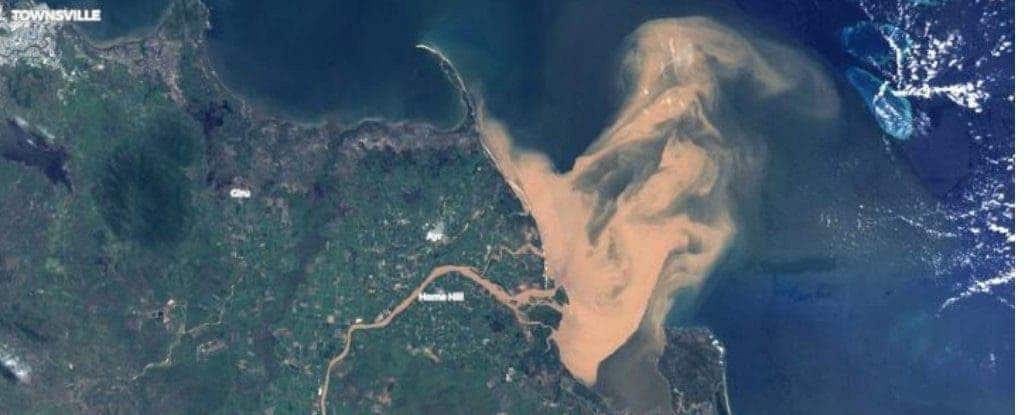As if the corals didn’t have enough going against them, a massive water runoff has now spilled into the sea, straight towards the reef.
An unusual surge of rainfall in Queensland, Australia, has led to swollen rivers, which in turn have overflown and brought massive amounts of muddy water to the ocean. The plume is so large it can be easily seen from satellite, and has already reached the closest reefs some 60 km from the coast.
“If you look at the remote sensing images, the one that’s standing out at the moment is the Burdekin, which is the biggest river in that area,” Frederieke Kroon from the Australian Institute of Marine Science (AIMS), who is part of a team which is monitoring water quality in the region, told ABC.
“Over the last two weeks, other rivers have produced large flood plumes as well, which have dissipated since then,” but they are still affecting an “extraordinarily large area,” she said.
The muddy water stops sunlight from going through the water, essentially smothering the reef and any other wildlife unfortunate enough to be in the area. The net impact of this damage is not yet clear, but researchers are worried that the longer the plume stays in place, the more damage it will do — and there are currently no strong winds to disperse it.
To make matters even worse, the mud washed into the oceans contains common farming chemicals like nitrogen and phosphorus, which could kill even more corals and seagrass.
We really can’t afford to put even more pressure on the coral reef. Rising temperatures and increasing water acidity have put a tremendous amount of environmental pressure on the coral and caused massive bleaching, putting the entire Great Barrier Reef at extreme risk. In addition to these threats, the reef faces many other threats, including poor water quality, parasites, and increasing touristic pressure. Half of the Great Barrier Reef has already disappeared, and if things carry on as usual, it may very well be gone forever. Saving the reef, if possible at all, will require urgent and massive intervention, and this recent event just adds more salt to the wound.
There may yet be one very thin silver lining to this story: the murky waters might actually work to temporarily reduce water temperatures
“If you want to have a flipside to the story that would be one, yes,” marine scientists Frederieke Kroon told the ABC, “but it’s still a huge disturbance to the reef [after] the bleaching and the cyclones that we’ve had over the last couple of years.”










